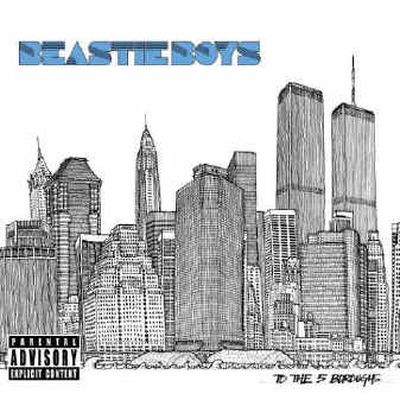Old-school homages shouldn’t kill new ideas

Given that The Roots has arguably the most versatile deejay in hip-hop (since its deejay is a six-piece band), it seems counter-intuitive that the Philadelphia rap band’s new album sounds more like loops and samples than live instrumentation.
Released last week, “The Tipping Point” is a complete one-eighty to 2002’s genre-hopping masterpiece “Phrenology.”
There are no 11-second punk collisions, no technorganic excursions, no spoken-word free jazz jaunts, no neo-soul innovations.
No bass, keys or guitar solos.
“The Tipping Point” is like the zag to “Phrenology’s” zig – an old-school album founded in straight-up beats and rhymes, rather than the grandiose musicianship that established The Roots as one of the best touring acts in music, period.
The only elements of that type of progress appear on the second hidden track of the album, a clever cover of “Tour De France” from the legendary soundtrack of “Breakin’.” The song incorporates call-and-response drum lines, hypnotic chants, staggering funk breaks and hand claps, and it does so without using any rap vocals. This is an example of something only The Roots is capable of, and it’s odd that you have to dig it out of a bonus track.
The rest of the album is like the Black Thought show. The Roots’ lead emcee is a microphone monster, at his best on the back-to-back lyrical slugfests “Web” and “Boom.” Imitations of Big Daddy Kane and Kool G. Rap on “Boom” will fool any old-school hip-hop fan into thinking the emcee vets actually appear on the album.
And that authentic old-school vibe is the album’s main triumph.
The Roots’ band members have gone back to the roots of hip-hop and abandoned all the momentum of the direction they took on their last outing.
On “The Tipping Point,” The Roots is still making thinking-man’s hip-hop, but while the focus is on Black Thought, there is less thought put into the songwriting. The songs sound like jam sessions, not fully developed ideas.
Bandleader ?uestlove even admits that on the hook for the lead single, “Don’t Say Nuthin’,” Black Thought is literally saying nothing.
“BT initially planned on filling in the nonsensical gaps at a later date, but upon first listen to his complete vocals – the chorus just seemed like a natural fit,” he stated in the CD liner notes.
Another rap group that has a foundation in live instrumentation, the Beastie Boys suffers the same shortcomings with “To the 5 Boroughs.”
It’s a refreshing return from the nuisance of an album that was “Hello Nasty,” but it ditches the funky instrumental tracks that made “Ill Communication” and “Check Your Head” stand above anything else labeled just as rap.
The Beasties’ members show their age most in the lyrical content, which is heavy on the preaching. The “can’t we just all get along” message is appreciated, to be sure, but the usually fun-loving Beastie Boys lays it on a little thick.
Beyond that, “To the 5 Boroughs” has plenty of old-school hip-hop references (samples from Big Daddy Kane, Eric B. and Rakim, EPMD and Sugar Hill Gang), which is fitting since they are alums of hip-hop’s golden age, but it doesn’t exactly break new ground.
Paying homage to old-school traditions is more than welcome in a time when the most popular hip-hop is violating the principles the art was built on, but not at the expense of introducing new ideas.
Bands like The Roots and the Beastie Boys should continue to look forward to the future of hip-hop, not backward at its past.